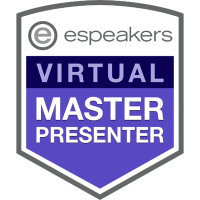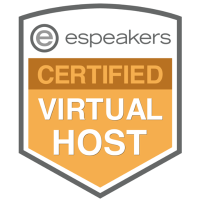|
A few weeks ago, I introduced the first step in communicating the importance of diversity within an organization – clarifying the benefits. Once you are clear about the benefits of creating a culturally inclusive work environment, your next step is to identify the key leaders and decision makers within the organization. To do this, answer three questions. First, who are the people that have the greatest influence? Keep in mind that these may not be the people at the top of the organizational chart, or the people with ‘manager’ in their title (but you will need to include some top managers). It’s the people that others listen to. Second, who are the people that make the decisions? In other words, who has the authority to approve the steps you want to take to empower diversity and create inclusion within the organization? Finally, who are the people that will be most supportive of your inclusion efforts? Try to identify two or three people that meet all three criteria and begin the diversity communication process with them.
Next Post: April 20, 2016 – How to Communicate the Importance of Diversity: Step 3
0 Comments
Last week, I introduced this topic by briefly discussing the importance of making the “business case” for diversity within an organization. I also introduced 4 steps you can take to make this case. The first step is clarifying the benefits of empowering diversity for your organization. These benefits can be summarized into three areas. The first is Improved Individual and Organizational Performance. When we do a good job of recruiting and retaining a diverse workforce, AND we help employees develop the skills they need to communicate, resolve conflict and solve problems in culturally diverse settings, we improve the overall quality of the workforce. We increase our ability to attract and retain top performers. We increase productivity on both an individual and group basis. We improve communication, reduce conflict and enhance trust between staff members. And we increase the likelihood that every individual, regardless of his or her background, will have an opportunity to be successful. The second benefit is Enhanced Internal and External Service. Simply stated, when we effectively increase the diversity of our staff, we increase our ability to understand, connect with and satisfy a diverse customer base. Our third and final benefit is Improved Bottom-Line. When we do a good job of creating culturally inclusive environments (and not just enlarging diversity by playing a numbers game), we reap bottom-line benefits such as reduced turnover, increased retention, reduced hiring costs, and improved revenues.
Next Post: March 23, 2016 – How to Communicate the Importance of Diversity: Step 2 As a consultant, I have helped many organizations facilitate diversity activities and interventions designed to improve both individual and organizational performance. To ensure success, I have found the most important step to take is to communicate the “business case” for diversity throughout the organization. You can do this by taking the following steps:
Next Post: March 2, 2016 – How to Communicate the Importance of Diversity: Step 1 Increase your empathy. Empathy can be defined as the ability to step into another person's shoes, and experience the world from his or her perspective. It is a cognitive and psychological state where you truly understand where another person is coming from. Empathy is the single most important element of multicultural communication. Without it, there is no true connection between people, and there is no chance of removing communication barriers such as stereotyping and ethnocentrism. To increase your empathy, you must actively work at getting to know culturally different people. You can do this by participating in social activities with culturally diverse individuals, attending cultural events, participating in programs specific to a cultural tradition like Black History Month, attending worship services at churches, synagogues and mosques, visiting ethnic restaurants, participating in diversity workshops, reading books by and about members of different cultural groups, and joining cultural organizations.
Next Post: April 28, 2014 – Removing the Barriers to Effective Multicultural Communication #3 Over the past several months, I have proffered 15 tips you can use to create inclusive organizational environments. To summarize and for easy reference, I have listed these tips below with a hyperlink to each blog post:
Next Post: February 24, 2014 – The 3 Barriers to Effective Multicultural Communication Facilitate a cultural audit and make changes as needed. A cultural audit evaluates your organization’s strengths and weaknesses when it comes to diversity practices related to recruitment, selection, retention, training, performance management, customer service, compensation and the use of outside vendors. For example, an audit might pose questions such as:
Hold a series of town hall meetings. These meetings, which are open to all organizational members, provide a forum for discussing topics of common interest (e.g., diversity issues). The goal of these meetings is to build a stronger community through the open exchange of information and ideas. Town hall meetings offer several benefits including improved organizational communication, enhanced decision-making regarding diversity efforts, a greater sense of ownership and involvement on part of employees/community members, and reduced confusion and miscommunication regarding diversity goals and activities.
Next Post: February 10, 2014 – Creating a Climate for Diversity: Tip #15 If your organization holds off-site meetings, conferences and seminars, consider hosting some of these events at a local cultural institution such as a museum of Native American or African American History. These facilities generally offer meeting services and the participants will have an opportunity to interact in a culturally diverse setting. Keep in mind there are many centers to choose from. Some examples include the Latino Arts Center, Chinese Cultural Center, Irish Cultural Center, German Cultural Center, Jewish Historical Society, Japan Society, Korea Society, and Hispanic Society of America. Simply type "cultural center" in your favorite Internet search engine and you will find your local options.
Next Post: February 3, 2014 – Creating a Climate for Diversity: Tip #14 Start resource groups for underrepresented group members. A resource group is an internal association dedicated to the professional development of a specific cultural group (e.g., LGBT, Asian-Americans and women). These groups provide an excellent networking source for the members and can significantly improve retention within an organization. To make sure your resource groups are successful, keep the following points in mind:
Next Post: January 27, 2014 – Creating a Climate for Diversity: Tip #13 Happy New Year! I hope you had a safe and prosperous holiday season. Our next diversity metric is a fairly common one. Turnover rate provides an excellent means to determine how effective you are at retaining your employees. It also allows you to compare retention rates between different employee demographic groups and categories. Turnover rate uses a simple formula that compares the number of terminated employees with the average employee population for a specified time frame (e.g., one year):
|
AuthorDr. Tyrone A. Holmes is an author, speaker, coach and consultant. He helps his clients develop the skills needed to communicate, resolve conflict, solve problems and improve performance in diverse organizational settings. Archives
March 2016
Categories
All
|
 RSS Feed
RSS Feed

